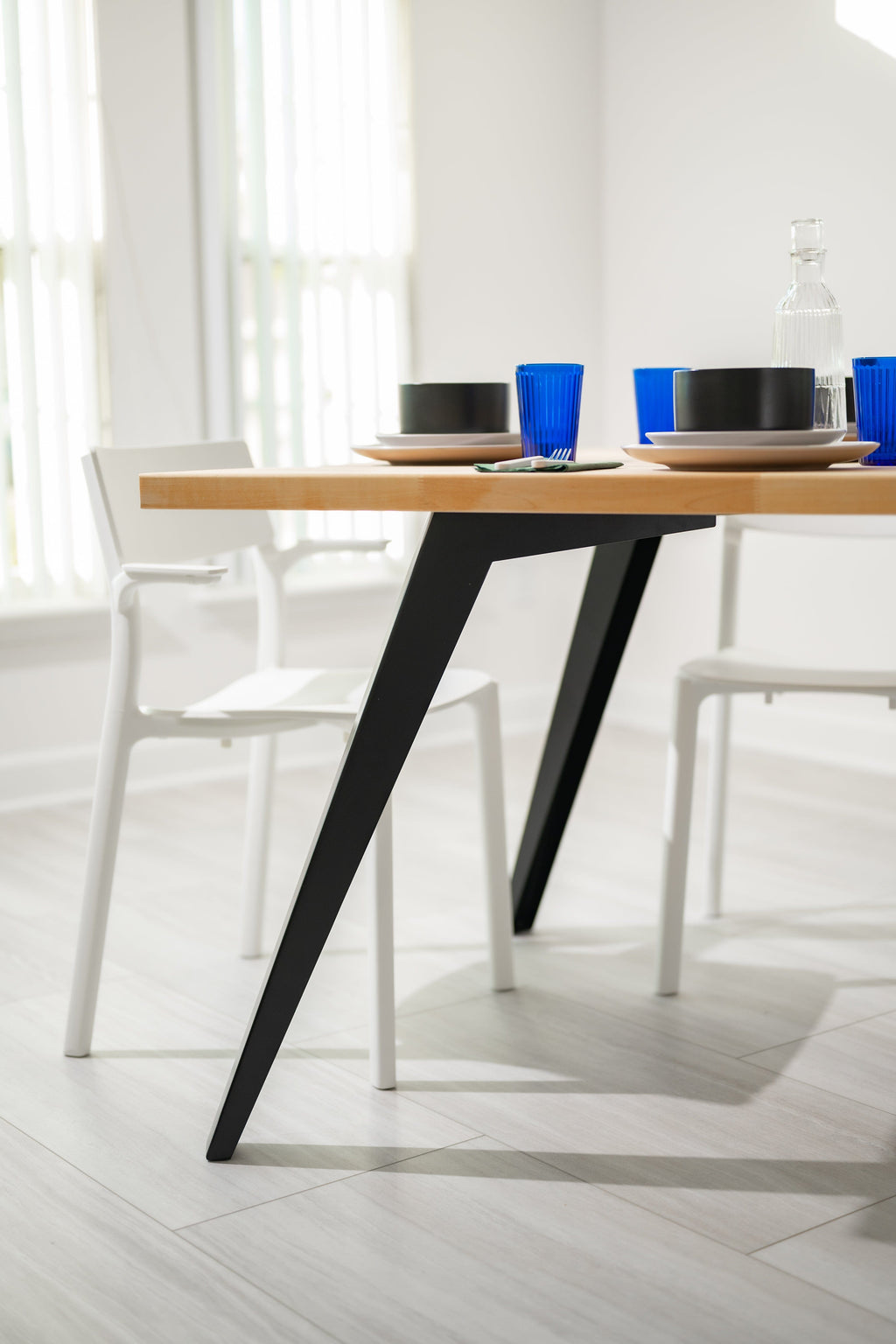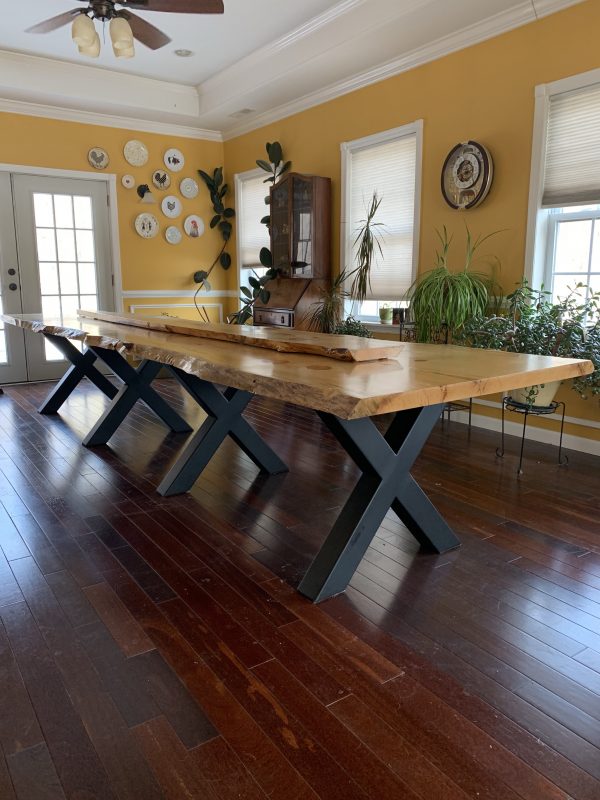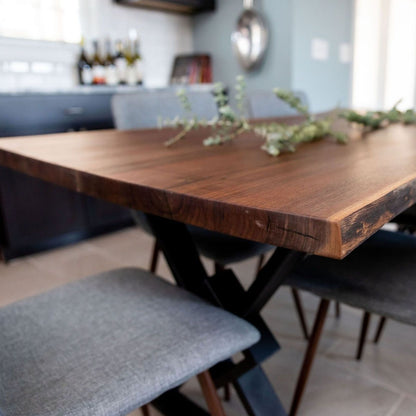Upgrade Your Furniture with Custom Dining Room Table Legs
Upgrade Your Furniture with Custom Dining Room Table Legs
Blog Article
Specialist Tips for Putting Up Eating Area Table Legs for Optimum Security
When it comes to setting up dining room table legs, attaining optimum security is extremely important for both performance and looks. What details techniques can boost stability also further?
Select the Right Legs
When selecting the proper legs for your dining room table, it is important to consider both performance and aesthetics. The legs you choose will dramatically influence the total style and security of the table. Review the table's intended usage; if you anticipate constant gatherings, sturdier legs, such as those made from solid timber or metal, may be much more appropriate, as they supply increased toughness and assistance.
Next, take into consideration the height and style of the legs in regard to the tabletop. Conventional eating tables commonly vary from 28 to 30 inches in elevation, so make sure the legs align with this criterion for comfort. The style of the legs need to complement the design of the tabletop-- whether it be modern-day, rustic, or traditional. As an example, tapered legs can include a contemporary touch, while turned legs might convey an extra traditional visual.

Select Appropriate Hardware
How can the right equipment improve the security and longevity of your dining area table? The selection of proper equipment is vital to making certain that the legs of your table are securely connected and able to withstand regular usage. High-quality screws, screws, and braces offer the essential stamina to sustain the weight of the table, along with any type of additional tons put upon it throughout dishes or celebrations.
When selecting screws, select those made from sturdy products such as stainless-steel or brass, which resist corrosion and keep stability over time. The size of the screws is equally essential; they must permeate deeply right into the table's structure without jeopardizing stability. For bolted connections, consider using lock washers to stop loosening because of vibration or movement.
Furthermore, making use of edge brackets can add added assistance, specifically for larger tables or those with much heavier tops. These brackets disperse weight uniformly and aid preserve the table's shape. Guaranteeing that the equipment you choose is proper for the specific materials of your table will certainly even more improve its overall security and durability, permitting you to enjoy your eating experience for many years to find.
Ensure Proper Placement
Appropriate placement of eating area table legs is necessary for anonymous both aesthetic allure and useful security. To accomplish optimum alignment, start by determining the range from the table's corners to the leg add-on points.
Use a degree throughout setup to validate that each leg is perpendicular to the tabletop. This step is important, as also small inconsistencies can escalate into considerable security problems gradually. It is recommended to note the desired leg settings on the bottom of the table with a pencil or concealing tape before protecting them. This technique offers as an aesthetic guide, permitting modifications as required.
Moreover, verify the alignment after the first screws are tightened up, as modifications might be necessary prior to completely safeguarding the equipment. By focusing on proper alignment, you not just improve the table's overall style however likewise make sure that it stays stable and functional for years to find.

Think About Weight Distribution
After guaranteeing proper placement of the dining-room table legs, it is very important to think about weight distribution to boost stability and performance. dining room table legs. Proper weight circulation is vital in stopping making certain and tottering that the table can sustain its intended tons without risk of tipping or collapsing
When placing the legs, ensure they are positioned at equal ranges from the center of the table to evenly disperse the weight across the framework. Think about the weight of the tabletop and any kind of things that will frequently relax on it, such as ornamental pieces or tabletop home appliances. Tables with much heavier surfaces should ideally have legs located closer to the edges, as this maximizes the base of assistance and reduces the threat of instability.
Additionally, if the table is intended for use in a high-traffic location, consider using larger materials for the legs or including stabilizing elements, such as cross-bracing or a lower rack - dining room table legs. These changes can aid maintain equilibrium and avoid changing during usage. Eventually, a well-considered weight circulation approach will considerably enhance the table's overall efficiency, guaranteeing it remains a practical and eye-catching focal point for your eating space
Test Security Prior To Use
Testing the stability of the dining space table before usage is an essential step that must not be ignored. If the table shows instability, recognize the legs or joints that may need modification.
Next, check that all fasteners and screws are tightened up appropriately. Loose links can bring about instability and possible damage in time. read review If necessary, use timber adhesive on joints to enhance security, ensuring to permit appropriate drying time.

Conclusion
Finally, the setup of dining-room table legs calls for mindful consideration of products, weight, equipment, and placement distribution to attain maximum stability. By picking high-quality fasteners and strong legs, making sure specific alignment, and distributing weight uniformly, the architectural stability of the table can be dramatically boosted. Conducting a security test before normal usage further makes sure that the table will stand up to everyday pressures, thereby providing a risk-free and trustworthy eating experience.
When it comes to setting up eating area table legs, attaining optimum stability is extremely important for both performance and appearances. The legs you choose will significantly affect the general layout and security of the table (dining room table legs). Conventional eating tables commonly range from 28 to 30 inches in height, so make sure the legs straighten with this requirement for convenience.Correct placement of dining area table legs is vital for both visual charm and practical stability.In final thought, the installment of eating space table legs requires cautious factor to consider of materials, hardware, placement, and weight distribution to attain optimum stability
Report this page